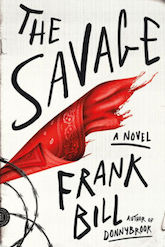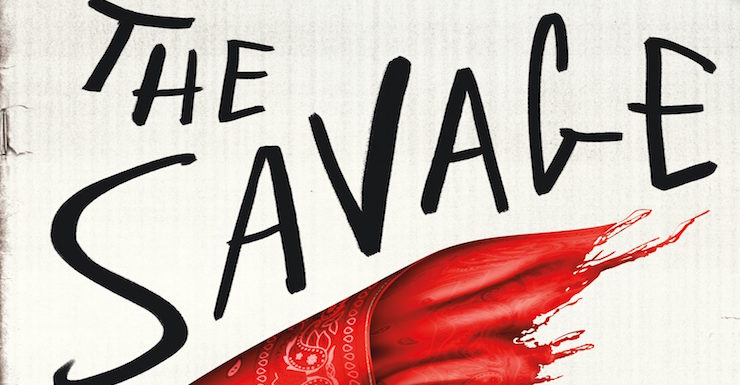There are certain expectations that a reader might have when reading novels billed as sequels or as part of a series. Chief among them: that a novel will fall into the same general category as its predecessor. The third book of a high fantasy series is unlikely to be a cyberpunk romance; the sequel to a novel set in a dystopian hellscape after the collapse of a futuristic civilization probably won’t be about secretive missions on a pre-cataclysm Atlantis. One volume largely sets the ground rules for a world going forward; the works that follow hew to the existing worldbuilding.
Except when they don’t.
Jo Walton’s Thessaly novels use aspects of science fiction (time travel, sentient robots) and fantasy (gods meddling in mortal affairs) to explore different philosophical questions; the result is that each novel focuses on a different aspect of a constantly fluctuating society, with different elements at the forefront of the narrative. Dave Hutchinson’s cycle of novels, beginning with Europe in Autumn, first seems to be a fairly straightforward tale of intrigue and spycraft set in a near-future Europe where questions of borders and national identities has been taken to its logical extent. Soon, though, the setting turns out to be more complex than that–even as it still remains true to the themes established early on. And Deji Bryce Olukotun’s After the Flare features some of the characters from his earlier novel Nigerians in Space, albeit in a more overtly science fictional setting.
Some writers are even bolder with how they handle their followups. Peter Straub’s The Throat is the concluding volume of a trilogy that began with the novels Koko and Mystery—but with the incorporation of metafictional elements, Straub concludes a number of thematic threads begun in the earlier novels while also allowing events to play out in a slightly different fictional context. And Alan Garner’s 2012 novel Boneland follows up two earlier novels written for young readers around 50 years earlier: The Weirdstone of Brisingamen and The Moon of Gomrath. Those novels told the story of a brother and sister caught up with the magical history of the region surrounding them, along with a host of strange and inhuman figures. Boneland is a much more somber tale, centered around an adult version of one of those characters, dealing with repercussions of events he can no longer remember. Boneland deals with some of the same thematic elements as its predecessors—weird history, local geography, the idea of sacred duties–but it lets them play out in a very different manner, without ever turning dissonant.
The two most recent books by Frank Bill also fall firmly into this category. His 2013 novel Donnybrook was a taut, pulpy work set in and around an underground fighting competition–imagine Achewood’s “The Great Outdoor Fight” filtered through the sensibility of James Ellroy at his most nihilistic and you’d be pretty close to the mark. It had its stylized elements for sure—while Bill turns the grit factor up to 11 when depicting rural poverty, the meth industry, and the things bad people will do to worse people, this never quite felt like a journalistic trip into the underground.
Buy the Book


The Savage
Bill’s new book, The Savage, depicts a near-future America in the throes of collapse. The government has imploded, militias dot the landscape, and those who have survived have largely learned to live in a more archaic manner. Horrific fates await those who are unprepared for them, as well as those who are supremely prepared—it’s that kind of novel. It’s also a de facto sequel to Donnybrook, though that isn’t necessarily apparent from the start. The novel’s first section details the troubled life of a young man named Van Dorn as he processes the life lessons given to him by his father, dodges hungry cannibals, and makes his way through a ruined landscape. The novel’s second part brings the reader up to speed with some of the characters from Donnybrook, and the third brings both threads together.
Moving from crime fiction to a work that’s outright dystopian is a bold choice, but it’s not without precedent. The Mad Max movies began in a near future close to our own before arriving at the more stylized settings of later installments, and Cormac McCarthy’s novel The Road arguably plays out like a thematic sequel to his earlier No Country For Old Men. But in the case of Bill’s novels, it’s also hard to not ponder the current shape of American politics as having taken the confined violence of Donnybrook to the national level of The Savage.
One character takes a swing at NAFTA, for instance: “Only thing it did was cut all good earnings throughout Mexico by two dollars on the hour.” Another character rails to Van Dorn about the loss of blue-collar jobs and the increased costs of education as being contributing factors to the collapse of society. And there’s a narrative skepticism of “power and the politics of ruling, meaning what was best for all was sometimes overlooked for the betterment of one.” This populist spirit doesn’t necessarily manifest itself in explicitly political terms–though it’s worth noting that one of the novel’s most loathsome characters is a vocal white supremacist.
It can be a little disconcerting to see the expanded context of Bill’s fictional landscape go from one dimension of pulp stylization to another. But there’s certainly a left-field tradition of it into which this fits–and a a number of narrative and thematic reasons that make it understandable. And that same narrative unpredictability can also be refreshing. Go on, throw a couple of dragons into your generation-ship sequel; add time travel to your saga of wizards and court politics. When handled well, that kind of disorientation can be as powerful as any tool in the narrative handbook.
Donnybrook and The Savage are available now from FSG.
 Tobias Carroll is the managing editor of Vol.1 Brooklyn. He is the author of the short story collection Transitory (Civil Coping Mechanisms) and the novel Reel (Rare Bird Books).
Tobias Carroll is the managing editor of Vol.1 Brooklyn. He is the author of the short story collection Transitory (Civil Coping Mechanisms) and the novel Reel (Rare Bird Books).










